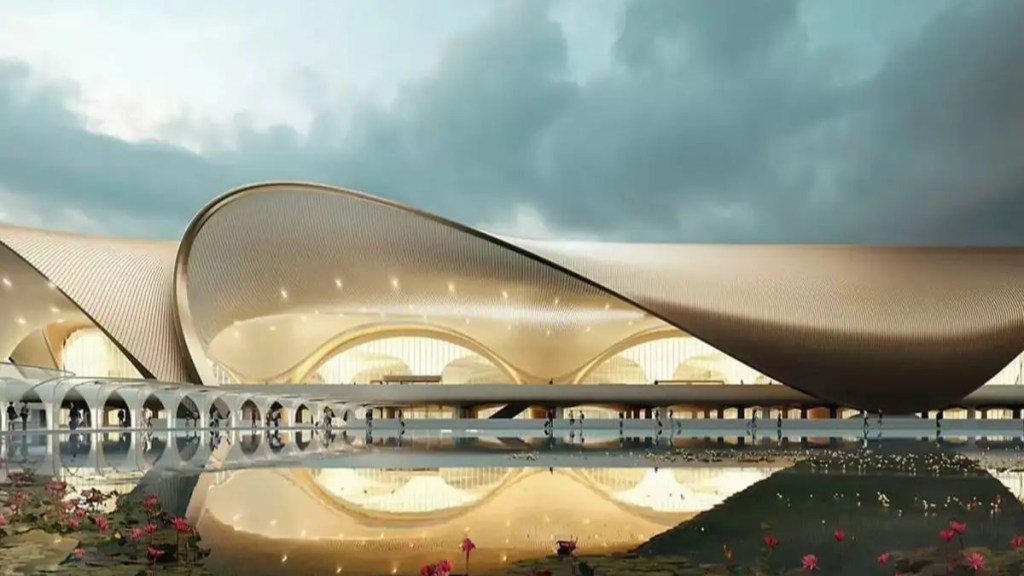As one enters the Navi Mumbai International Airport, large digital screens catch the eye, some displaying flight information and some beaming the history of arts and culture of Maharashtra as well as India.
Designed in the shape of a lotus, the new airport, the first phase of which will be opened by Prime Minister Narendra Modi on Wednesday, is a blend of tradition and modernity. The first commercial flight is expected to take off from the airport at Ulwe, nearly 37 kilometres from South Mumbai, in December this year.
What did CEO of Adani Airport Holdings say?
The aim is to provide the maximum convenience and reduce “anxiety points” for passengers through the use of technology while embracing tradition in design and digital displays, according to the airport operator. “Our aim is to remove anxiety from common people,” said Arun Bansal, CEO of Adani Airport Holdings (AAHL).
In total, the airport will have 32,000 sq ft of digital art programme and 4,000 sq ft of LED screens. The airport will have facilities such as pre-booking of parking, 100% Digi Yatra-enabled gates , a number of check-in and self-baggage drop counters to reduce queue time.
What are some features of the airport?
The airport has 66 conventional check-in counters and 22 self-baggage drop-ins. The airport is also working on a system that will inform passengers about their luggage belts. The airport will have an app where passengers can order food from anywhere in the airport and get it delivered. The airport will have a food hall which will have a unique “Bombay Bond” which will have restaurants which have origins in Mumbai.
Bansal said the entire non-aero area will have paper-less transactions and kiosks will be set up for pre-ordering food. “Passengers can pre-order from the gates from cloud kitchens which will be 10 to 15 minute service,” he said, adding that the airport will also have gaming zones for local people.
Initially, the airport aims to handle 20 million passengers per annum (MPPA). It will handle 90 million passengers once fully developed, thereby becoming the largest airport in the country. The second phase of the airport is expected to be opened by 2029. The airport, spread across 1,160 hectares, is developed and managed by Navi Mumbai International Airport (NMIAL), which is a special purpose vehicle between Mumbai international Airport , a subsidiary of Adani Airport Holdings having 74% stake and CIDCO of Maharashtra holding 26%.
With 3.8 million metric tonne of planned capacity, the company aims to make it largest cargo hub in the country and plans to set up largest MRO facility in the airport. The airport has already tied up with Akasa Air, IndiGo and Air India for operations. In the initial phase, it will handle about 20 to 23 aircraft movements per hour, with flexibility to scale up as operations stabilise.
The company has invested Rs 20,000 crore in phase 1 and will invest Rs 30,000 crore in the second phase , said Capt BVJK Sharma, CEO at NMIA. About 65% of the investments are funded through debt. The airport will ultimately house four terminals linked by automated people movers, underground fuel hydrant systems, and efficient cargo and passenger movement networks. Once all four terminals are operational, capacity could reach up to 100 MPPA.
Sharma said a connector is getting built which will connect Coastal Road to Atal Setu in Sewri. It is expected to open in April next year and will help passengers travel faster from Mumbai. “They can take Coastal Road from Worli to reach Sewri and then take Atal Setu to reach the terminal,” he said.

